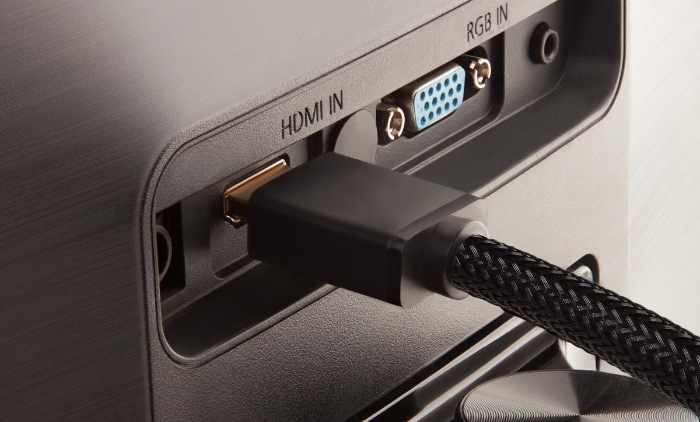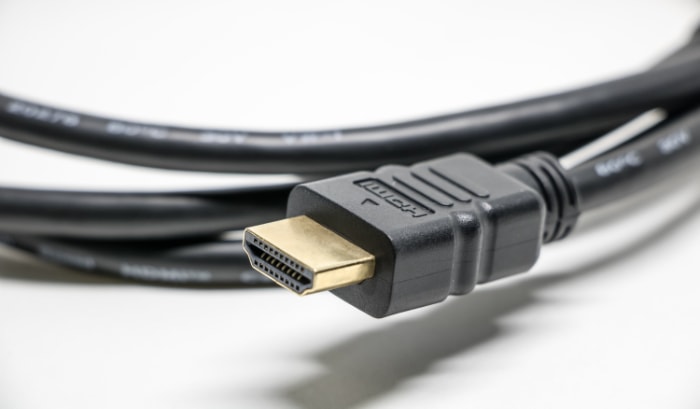How to Identify Bad HDMI Cables: Spot the Difference

In the realm of digital audio and video equipment, the humble HDMI cable plays a key role that is often overlooked. Standing for High Definition Multimedia Interface, HDMI cables act as the conduit for digital information, delivering crisp, high-quality audio and visual signals from your device to your display or sound system.
Whether you’re watching your favorite movie, streaming an intense gaming session, or delivering an important business presentation, it’s the HDMI cable that ensures the information gets to its destination correctly and without loss of quality.
However, like all pieces of technology, HDMI cables are not immune to faults and wear. They can suffer from physical damage, manufacturing defects, or simple degradation over time. And when HDMI cables start to go bad, the signs are often subtle, confusing, and frustrating.
Common Problems with HDMI Cables
In this section, we will explore some of the common problems that may plague HDMI cables. Understanding these issues can provide valuable insight into potential problems and the effects they can have on your audio and visual experience.
Signal Degradation
Signal degradation is a common problem associated with HDMI cables, particularly those that are longer in length or of lower quality.
In this situation, the signal that the HDMI cable carries from the source to the display is weakened, resulting in inferior audio or video quality. This issue can manifest itself in a variety of ways, such as pixelation, audio dropouts, or complete loss of signal.
Manufacturing Defects
While HDMI cables generally adhere to high manufacturing standards, defects can still occur. These might include faulty connectors, poor soldering, incorrect wiring, or substandard materials. These defects can cause a range of issues, from intermittent signal problems to total failure.
Physical Damage
HDMI cables, like any physical object, can be damaged through wear and tear, mishandling, or exposure to adverse conditions. Physical damage might include broken or bent connectors, frayed or broken cable shielding, or internal wire damage. These damages can often lead to inconsistent performance or complete cable failure.
Compatibility Issues
As technology advances, so do HDMI standards. An older HDMI cable might not support the features of a newer device, such as 4K resolution, HDR, or high refresh rates. This is particularly relevant if you’re using a newer display or source device with an older HDMI cable.
Poor Cable Connections
Lastly, a common issue that isn’t necessarily a cable problem per se, but still can cause a lot of trouble, is poor cable connections. This happens when the HDMI cable is not properly connected to the source or display. The symptoms can mimic those of a faulty cable, including signal loss and degradation.
Each of these problems can affect the performance of your HDMI cables differently. By understanding what these common issues are, you can better diagnose and solve potential HDMI problems.
Signs of Bad HDMI Cables
As we’ve explored the common problems that can afflict HDMI cables, it’s essential to understand the corresponding symptoms or signs that suggest your HDMI cable may be bad. Being able to identify these signs can help in troubleshooting and ensuring a smooth audio-visual experience.
No Signal or Intermittent Signal
One of the clearest signs of a bad HDMI cable is a complete loss of signal. In this situation, your screen may display a ‘no signal’ message, or you might have no audio or video output at all.
An intermittent signal, where the audio or video drops out randomly, can also suggest a faulty HDMI cable. This issue is typically caused by physical damage or manufacturing defects that disrupt the signal transmission intermittently.
Poor Video Quality
A defective HDMI cable can also result in poor video quality. This can manifest as grainy or pixelated images, flickering, lines on the screen, incorrect colors, or even a lower resolution than expected. These symptoms are often caused by signal degradation, physical damage, or compatibility issues with newer technology.
Audio Issues
A bad HDMI cable can impact audio quality just as much as video quality. You might experience symptoms such as buzzing, audio distortion, intermittent sound, or complete audio loss. These issues often stem from signal degradation or physical damage to the cable.
Physical Damages
Visible physical damage to the HDMI cable can be an obvious sign of a problem. This can include frayed or bent cables, broken connectors, or a cable that feels loose when connected. Physical damage can disrupt the signal flow, leading to a range of audio and video issues.
Connection Problems
If you’re having difficulties getting your HDMI cable to connect to your devices, or if the connection feels loose, it may be an indication of a problem. This can be due to physical damage to the connectors, manufacturing defects, or compatibility issues between the cable and the device.
Recognizing these signs of a bad HDMI cable is the first step to troubleshooting and resolving any issues you might be experiencing.
How to Test if Your HDMI Cable is Bad

If you’re experiencing audio-visual problems and suspect a faulty HDMI cable, the next logical step is to test it. The testing process is not complicated and can be done without specialized tools or technical expertise. Here, we provide a step-by-step guide on how to test HDMI cables.
Basic Inspection
Start by visually inspecting the HDMI cable for any apparent physical damage. Look for signs like frayed or torn shielding, bent or broken connectors, and any obvious signs of wear or damage.
Swapping the HDMI Cable
One of the simplest ways to test if your HDMI cable is bad is to replace it temporarily with another HDMI cable known to be in good working order. If your system works perfectly with the replacement cable, it’s highly likely that your original HDMI cable is faulty.
Testing on Different Devices
Another method is to try the suspected HDMI cable with different devices. If the cable consistently produces poor audio-visual quality across various devices, it’s safe to assume the cable is the issue.
Check the Cable Connection
Ensure that the HDMI cable is properly connected to your devices. Loose or improper connections can often mimic the symptoms of a faulty cable.
Use Built-in Cable Testing Features
Some modern TVs and devices have built-in cable testing features in their system settings. This can be a useful tool to check the status and quality of your HDMI cables.
By using these testing methods, you can verify if your HDMI cable is indeed causing the problems you’re experiencing. If it turns out to be the case, you can then proceed to replace it with a high-quality cable to ensure the best possible audio-visual experience.
Tips for Choosing Quality HDMI Cables
If your HDMI cable has been diagnosed as faulty, or if you’re simply looking to upgrade your current setup, it’s essential to know what to look for when purchasing a new HDMI cable. Here are some valuable tips to guide you in your selection process.
Understand HDMI Versions
HDMI cables come in different versions, each corresponding to a specific set of specifications and capabilities.
For instance, HDMI 2.0 supports 4K video at 60 frames per second, while HDMI 2.1 can handle 4K at 120 frames per second or 8K at 60 frames per second. Make sure the HDMI cable you choose is compatible with your devices and meets your specific needs.
Cable Length
The length of an HDMI cable can influence signal quality. In general, the longer the cable, the higher the chance of signal degradation, particularly for cables exceeding 25 feet. If you require a long cable, consider investing in an active HDMI cable that features built-in electronics to boost the signal and maintain quality.
Build Quality
A robustly built HDMI cable will be more resistant to wear and tear, and more likely to maintain good performance over time. Look for cables with quality connectors, sturdy shielding, and good overall build quality.
Brand Reputation
Not all HDMI cables are created equal. While price is not always a direct indicator of quality, trusted and reputable brands often provide consistently high-quality cables. Look for brands with good reviews and positive customer feedback.
Certification
To ensure an HDMI cable meets specific quality standards, look for ones that have been certified. For example, Premium HDMI Cable Certification guarantees the cable has been tested to reliably support 4K/UltraHD with a bandwidth of up to 18Gbps.
By using these tips as a guide, you can make an informed choice when buying your next HDMI cable, ensuring that it delivers the performance you need for your audio-visual setup.
Conclusion
In the intricate world of digital audio-visual technology, HDMI cables play an unsung yet pivotal role. They act as vital arteries of data, ensuring that high-quality audio and visual signals seamlessly make their journey from your devices to your display or sound system.
However, like all components, HDMI cables can suffer from faults and issues that impact their performance.
As we’ve explored in this blog post, signs of a bad HDMI cable can manifest in various ways – from complete signal loss to intermittent disruptions, and from poor video quality to compromised audio. Recognizing these symptoms is crucial in diagnosing issues, enabling you to maintain a smooth and uninterrupted audio-visual experience.
However, recognition alone is not sufficient. It’s equally important to test your HDMI cables, ensuring that they are indeed the cause of any problems you may be experiencing. And when it’s time to replace or upgrade your HDMI cables, having the know-how to choose a quality cable is invaluable.
In essence, understanding the signs of a bad HDMI cable, knowing how to test for faults, and making informed choices when purchasing a new cable, are all key to ensuring optimal performance from your digital audio-visual setup.
Just as a chain is only as strong as its weakest link, your audio-visual system is only as reliable as its components. By keeping your HDMI cables in check, you’re ensuring that they remain strong links in your digital AV chain.


